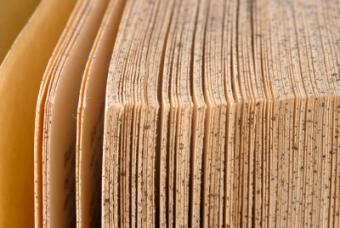
Learning how to recycle paper is a great idea for those interested in helping to reduce the human burden on the environment and improve the quality of life for us all. However, those are not the only reasons for learning how to recycle paper. After years of mass-produced everything, there has been a resurgence of interest in handcrafts and unique designs. And, with the economy as it is today, and more trouble said to be on the fiscal horizon, recycling paper may end up being a valuable skill.
Practical Ideas For Recycling Paper
Certainly everybody is familiar with the childhood project of making paper from used paper and newspapers. This is an excellent way of recycling paper into practical and unique items. Personalized stationary, greeting cards, and art paper are just a few of the things learning how to recycle paper can provide.
You can use the paper you make and some simple Japanese book binding techniques to make those blank books that many use for journaling, notebooks, address books, etc. The equipment necessary is minimal, and you're almost sure to create something out of the ordinary and for significantly less than you'll pay for the typical mass-produced blank books sold everywhere.
Papiermache type projects can produce a wealth of useful household items, such as wastepaper baskets, decorative and practical bowls for storing things in, shelves, and tables. Beautiful beads can be made of recycled paper, and when they are coated after drying with polyurethane or varnish, they can last for years. Recycled paper has, in recent times, been used as a building material for homes. When used with cement to form what has been called papercrete, recycled paper can be used in a similar fashion as adobe bricks to build walls.
Shredded paper can be used as packing materials, instead of the Styrofoam chunks that are commonly used. It can also be used in place of part of the cedar chips and other materials used in small pet cages, such as hamsters, gerbils, and guinea pigs.
How To Recycle Paper - The Basic Techniques
The basic techniques for recycling paper into usable paper and projects that use methods similar to the classic papiermache are quite similar. The first step is to shred the used paper and put it in water with cornstarch or some other thickening-type agent. The goal is to make the paper into pulp, so that you can use that pulp to create new paper or to mold a particular shape or object.
When making paper, a strainer is used so that the water drains away as the pulp is pressed into sheets of new paper. Dried flowers, glitter, coloring agents and many other touches can be added before setting the paper to dry to personalize the end product. When using the pulp, which will differ in water content depending on the specifics of the project at hand, after it is molded into shape, it will need to be left to dry thoroughly. Some projects require multiple layers of shaping and multiple drying periods.
Learning how to recycle paper is very easy as the processes involved really are not at all difficult to master. With the broad range of useful and practical items that can be made, as well as the unique and beautiful paper products that can be created, there's no real need to let any of the paper used in your household go to waste. Many paper-recycling projects are also quite child-friendly, offering the added benefit of keeping the children happily occupied.
Waste Not, Want Not
Recycling paper, in addition to being good for the environment, can let you create a broad range of useful items for your home, as well as many lovely items that would be welcome gifts. As thrifty as it is environmentally smart, recycling paper has many practical uses. Recycled paper can even be used as a part of a low-cost, environmentally conscious building plan, something that those taking part in the trend towards more sustainable living models are sure to appreciate.







